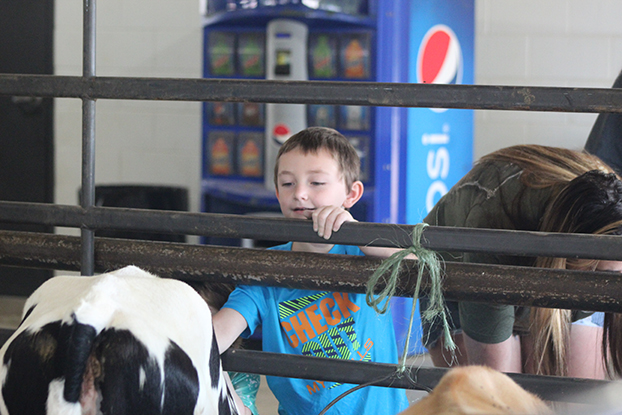Bird flu health risks to public remain low despite human case
Published 10:05 am Friday, April 5, 2024

- Dennis Knoll pets a cow at the Brookhaven Farmer’s Market Dairy Day Friday. (Hunter Cloud | The Daily Leader)
Robert Gregory
MSU Extension
STARKVILLE — The transmission risk of H5N1 bird flu to humans remains minimal despite a rise in confirmed cases in dairy cows and poultry in several states and the first known case of a person catching the virus from a mammal.
Trending
Since the U.S. Department of Agriculture confirmed detections March 25 of Highly Pathogenic Avian Influenza, or HPAI, in dairy herds in Texas and Kansas, more cases have been confirmed in four other states. Then, the Centers for Disease Control and Prevention confirmed a human case April 1 – the first human case in the U.S. in two years and only the second on record. The infected person, whose prominent symptom was conjunctivitis, worked at a dairy farm.
The next day, Mississippi-based Cal-Maine Foods, the largest egg producer in the U.S., announced it had halted production at its Texas plant and euthanized more than 3% of its flock after a positive HPAI case was confirmed there.
As of April 4, no HPAI cases have been reported in Mississippi’s commercial flocks this fiscal year. HPAI is a highly contagious strain of avian influenza that can kill entire flocks of infected poultry. The virus can occur naturally in wild aquatic birds and can be spread to poultry and other farm and wild animals.
Byron Williams, an associate professor of food science with the Mississippi State University Extension Service, reiterated the CDC’s stance on a low human risk to the public.
“As long as people are handling and preparing food properly, which they should be doing anyway, ordinary preventative measures should reduce the risk of contracting HPAI,” Williams said. “Thorough cooking and proper pasteurization temperatures have been shown to destroy almost all influenza viruses.”
For consumers, prevention means consuming pasteurized milk or using it to make other food and dairy products and cooking poultry to an internal temperature of at least 165 degrees Fahrenheit. Other foods should be cooked and handled properly to reduce risk from HPAI, if present. For farm and poultry operations, it means wearing personal protective equipment and avoiding direct skin contact with sick or dead animals.
Trending
“Cases in humans rarely develop from consuming the food or milk product of an infected animal,” Williams said. “It’s exposure to the live or dead animal from the exterior. The way you could get it through drinking raw milk would be from external contamination of the virus from the animal making its way into the liquid.”
Jim Watson, state veterinarian with the Mississippi Board of Animal Health, said pasteurization kills any such bacteria or virus in raw milk.
“Pasteurization was initially developed to inactivate the bacteria that causes brucellosis and tuberculosis in people and was a serious public health problem many years ago,” Watson said. “The HPAI virus is much more sensitive to heat than either of those two bacteria.
“Because of the protections of our meat inspection system in the country, sick animals aren’t allowed into the food supply,” he added. “If for some reason an animal with HPAI was not sick enough to be held at the processing plant, normal cooking temperatures will inactivate the virus.”
Watson encouraged dairy producers to be alert for dead migratory waterfowl or vultures in the vicinity of their herds and watch for HPAI symptoms reported in cattle that have tested positive. These include a drop in milk production, loss of appetite, changes in manure consistency, thickened milk and low-grade fevers.





